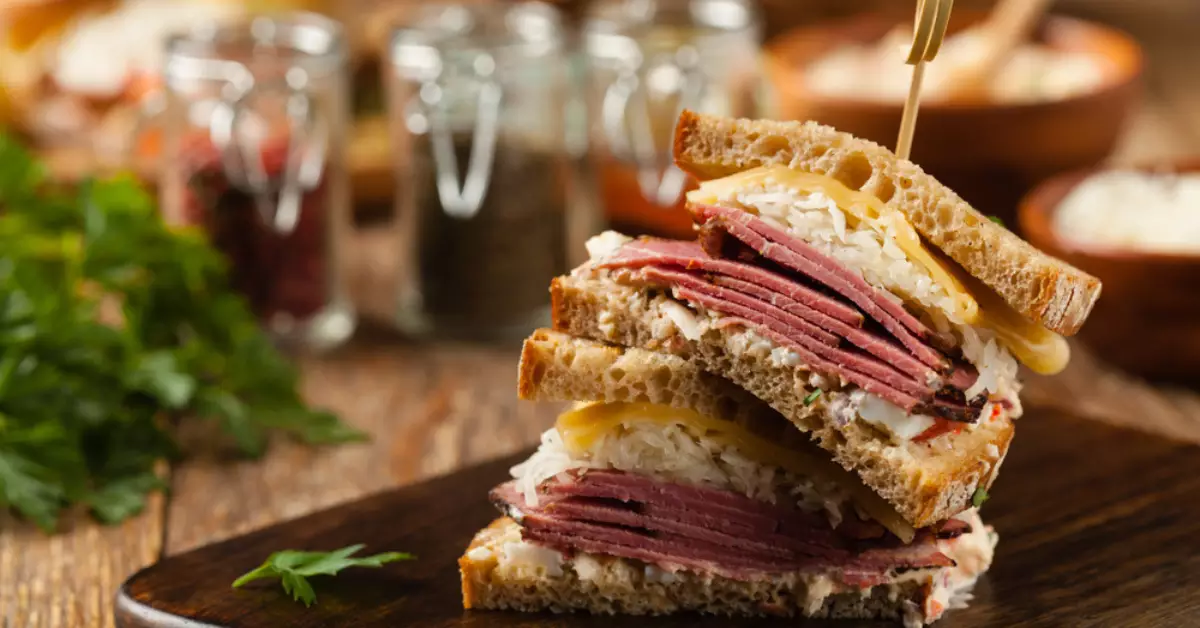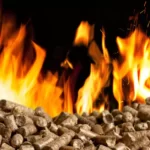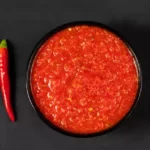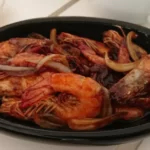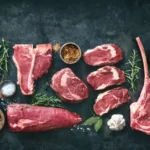The culinary world is a place of endless creativity and innovation, where the combination of different ingredients can result in delicious and exciting dishes. Among the myriad of meat-based dishes available, pastrami stands out for its distinct flavor and tender texture.
It is traditionally made from brisket, a cut of beef or veal from the lower chest or breast. However, as culinary enthusiasts continue to experiment with different cuts of meat, a pertinent question has surfaced – can one make pastrami from chuck roast?
Yes, it is absolutely possible to make pastrami from chuck roast. In fact, the chuck roast, a cut of beef situated close to the cow’s neck, presents its unique characteristics that might just add a new dimension to your homemade pastrami. Chuck roast is known for its rich, deep flavor and succulent texture when cooked slowly, making it an excellent candidate for a non-traditional, yet equally delectable, pastrami.
This concept of using chuck roast for pastrami may seem unconventional, but it is a testament to the culinary world’s adaptability. Embracing this method could open doors to a new array of flavors and textures, offering a unique twist to the traditional pastrami that we know and love.
The Anatomy of a Chuck Roast
Description of Chuck Roast
The chuck roast, also known as “pot roast”, is derived from the shoulder area of the cow. This section gets quite a workout, resulting in a high collagen content in the meat. Collagen, when cooked low and slow, transforms into gelatin, offering a delicious, tender mouthfeel to the meat.
The roast is also generously marbled, meaning it has a good amount of fat interspersed with the muscle fibers. This fat melts during the cooking process, providing a natural basting effect that keeps the meat moist and imparts a deep, robust flavor.
Common Uses for Chuck Roast in Cooking
Chuck roast is a versatile cut of meat used in various dishes across different cuisines. Its texture and flavor profile make it the preferred choice for comfort food classics like beef stew, pot roast, and pulled beef. The meat’s richness and ability to absorb flavors make it suitable for slow cooking methods, such as braising and smoking.
The Characteristics of Traditional Pastrami
Origin and Traditional Preparation of Pastrami
Pastrami is a meat product of Romanian origin, traditionally made from beef brisket. The brisket is first brined, then coated with a mix of various spices such as coriander, garlic, black pepper, and smoked paprika. The meat is then smoked and steamed until it achieves its signature tender texture.
The Choice of Meat for Traditional Pastrami
Brisket is usually the cut of choice for making pastrami due to its balance of fat and lean meat. The fatty layers keep the meat moist during the lengthy smoking and steaming process, while the lean parts offer a delightful chewiness.
Can You Use Chuck Roast for Pastrami?
As adventurous home chefs and culinary professionals continue to push the boundaries of traditional food preparations, the use of alternate cuts of meat in classic recipes has become commonplace.
Chuck roast, with its unique characteristics, has proven to be a viable alternative for brisket in the making of pastrami. Let’s delve into the pros and cons of this method and how the distinctive features of the chuck roast can influence the resulting pastrami.
Pros and Cons of Using Chuck Roast for Pastrami
When switching from brisket to chuck roast in your pastrami recipe, there are several benefits and potential drawbacks to consider.
Pros
- Enhanced flavor: Chuck roast is revered for its deep, beefy flavor which can lend a unique taste to your pastrami.
- Cost-effective: As a less expensive cut than brisket, chuck roast can be a more budget-friendly choice for making pastrami at home.
- Availability: Chuck roast is commonly available in most grocery stores or butcher shops, making it a convenient option.
Cons
- Longer cooking time: Chuck roast tends to be tougher than brisket, which may necessitate a longer cooking time to achieve the desired tenderness.
- Less traditional: Some pastrami purists may argue that the unique flavor and texture of chuck roast deviate too far from the classic taste of pastrami.
How the Fat Content and Texture of Chuck Roast Impact the Pastrami?
The composition of chuck roast presents certain factors that can influence the outcome of your pastrami.
Fat Content
The marbling, or intramuscular fat, found in chuck roast can greatly enhance the flavor of your pastrami. As the roast cooks, this fat renders down, self-basting the meat and keeping it moist. This can lead to a richer, juicier final product compared to the traditional brisket.
Texture
The shoulder muscle where chuck roast is cut from is heavily used by the cow, leading to a higher collagen content in the meat. When cooked slowly, this collagen breaks down into gelatin, creating a tender texture. However, if not cooked properly, the higher collagen content can make the chuck roast tough, resulting in a different texture compared to brisket-based pastrami.
Steps to Making Pastrami from Chuck Roast
Creating pastrami from chuck roast is a journey of flavors that requires patience and careful preparation. Here’s how to do it:
Preparing the Chuck Roast
Start by sourcing a high-quality chuck roast from a reliable butcher. Trim off any excess fat, but leave a small layer to add flavor and juiciness to your pastrami.
Applying the Pastrami Cure
The curing process is vital in pastrami preparation. It helps to preserve the meat, imparts flavor, and tenderizes the chuck roast. For the curing mixture, you’ll need:
- Kosher salt
- Sugar
- Curing salt (Prague powder #1)
- Crushed garlic
- Ground coriander
- Ground black pepper
Rub the mixture thoroughly into the meat, ensuring every part is well-coated. Place the chuck roast in a zip-lock bag, removing as much air as possible, and seal it. The roast should be refrigerated and cured for about a week, turning the bag daily to ensure even curing.
Cooking Process
After curing, rinse off the curing mixture and pat the roast dry. Apply a fresh coating of ground spices (coriander and black pepper are common choices). Then, smoke the chuck roast at a low temperature (approximately 225°F) for several hours, until it reaches an internal temperature of 165°F.
After smoking, you have the option of steaming the roast until it becomes tender. This is a traditional step in pastrami preparation, but it’s not mandatory.
Tips for Getting the Best Results
Ensuring a successful chuck roast pastrami involves more than just following the steps. Here are some additional tips to consider:
Importance of Meat Quality
High-quality meat is the foundation of any great meat dish, and pastrami is no exception. Always source the best quality chuck roast you can find. Local butcher shops are often a great source of fresh, high-quality meats.
Choosing the Right Spices for the Cure
The spices used in the curing mixture greatly influence the flavor profile of your pastrami. While the traditional spices include coriander, black pepper, and garlic, feel free to experiment with others to create a unique flavor. Some might add a bit of smoked paprika or mustard seeds to their mixture.
Optimal Cooking Techniques
Remember that the key to cooking chuck roast is a low and slow process. This allows the collagen in the meat to break down into gelatin, resulting in a tender texture. If you’re using a smoker, ensure it maintains a steady low temperature throughout the cooking process.
Comparing Chuck Roast Pastrami with Traditional Pastrami
Differences in Taste and Texture
Chuck roast pastrami tends to have a deeper, beefier flavor compared to brisket due to its fat content and marbling. The texture may be a bit chewier if not cooked properly. However, if done right, you can achieve a tender and juicy pastrami that rivals traditional brisket.
Nutritional Differences, if Any
Chuck roast is generally higher in fat compared to brisket, which could result in a higher calorie content. However, the exact nutritional value would largely depend on the cooking method and the amount of fat trimmed from the roast.
Frequently Asked Questions
Can I use a different cut of meat to make pastrami?
Absolutely. While brisket and chuck roast are common choices, you can also experiment with other cuts like rump roast or even turkey breast for a poultry version.
How long should I cure the chuck roast for pastrami?
A period of 5 to 7 days is usually sufficient to cure chuck roast for pastrami. This allows the curing mixture to penetrate the meat fully, resulting in a flavorful end product.
Do I have to steam the pastrami after smoking?
Steaming after smoking is a traditional method used in making pastrami, as it adds moisture and tenderness to the meat. However, it is not mandatory, especially if you prefer a smokier and firmer pastrami.

